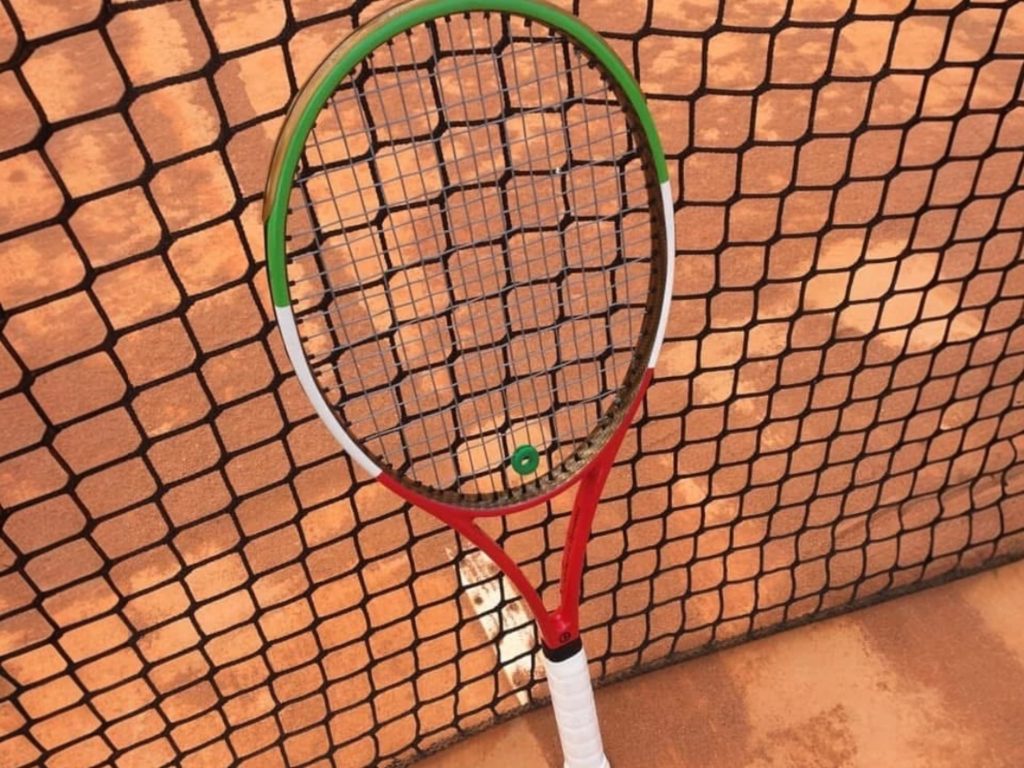
In the world of racket sports, performance is often thought to rely on strength, speed, and practice. Yet behind every powerful shot lies a set of biomechanical principles that define how energy flows through the body. One of the most foundational concepts is the “double pendulum effect.” In tennis, padel, and pickleball, this principle is not only present, but essential to understanding how athletes generate velocity, control, and efficiency in their strokes. At DAHCOR, where customization meets performance, such insights shape how we design gear to serve the athlete—not just in theory, but in measurable on-court results.
A double pendulum system consists of two linked segments swinging in sequence. In human movement, the first segment is the upper arm and the second is the forearm, culminating in the hand and racket. The motion starts from the body and flows outward, accelerating each segment to produce a whip-like effect. This is how professional players can generate immense racket head speed even without swinging with apparent force.
In racket sports, the double pendulum model is critical for maximizing power output with minimal energy loss. The precise coordination of each segment—from torso rotation, to shoulder and elbow articulation, to wrist release—is what allows a player to strike the ball with optimal velocity and control.
In tennis, the kinetic chain culminates most clearly in the serve and groundstrokes. During a serve, the legs initiate force, which travels through a series of rotations and extensions. The upper arm begins the pendulum, followed by the forearm and wrist, creating a chain reaction that accelerates the racket head through contact.
Biomechanical studies consistently show that optimal timing of these components results in peak ball speed and reduced joint strain. A delay in one link of the chain can dramatically reduce efficiency and increase injury risk. Customization—in grip size, racket balance, and frame stiffness—affects how well this motion is transmitted.
Padel modifies the classical double pendulum through the constraints of space and racket structure. The court is smaller, movements are more compact, and the strokes rely heavily on wrist and elbow articulation due to the solid (no-strings) racket face. Despite these differences, the double pendulum still plays a vital role.
In padel, the swing involves less full-body momentum and more emphasis on acceleration from the elbow and wrist. The reduced distance between the player and the wall or net requires faster reaction times and micro-adjustments in the kinetic sequence. Because of this, the second link in the pendulum (forearm and wrist) becomes disproportionately important compared to tennis.
Pickleball, though played with a paddle and plastic ball, also adheres to the double pendulum model. Here, the swings are shorter and the equipment is lighter, but the biomechanical principles remain. Power generation stems from the same kinetic sequence: legs to torso to arm to paddle.
The challenge in pickleball lies in controlling power within limited space and using rapid exchanges at the net (dinks and volleys) to an advantage. The wrist and forearm are highly active, and the double pendulum must be finely tuned to prevent overuse injuries, particularly for recreational players who may lack the muscular conditioning of elite athletes.
Understanding physics is only the first step. Applying it through design is where innovation happens. DAHCOR’s equipment architecture incorporates:
Whether it’s the longer arc of a tennis serve, the compact explosiveness of a padel volley, or the tactical touch in pickleball, our gear is built to support and enhance the biomechanics behind each sport’s variation of the double pendulum.
The double pendulum effect is not just academic physics—it is lived every day by players who swing a racket or paddle. At DAHCOR, we see it as a foundational concept guiding our mission to provide athlete-centered solutions, understanding and applying the double pendulum leads to smarter movement, fewer injuries, and better results.
By tailoring equipment to the biomechanics of each sport, we ensure that our users don’t just play—they perform.
See you on court,
